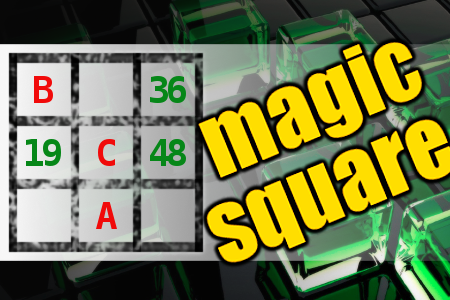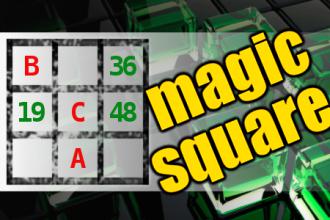MAGIC SQUARE: Calculate A-B*C
The aim is to place the some numbers from the list (12, 13, 19, 29, 30, 36, 47, 48, 54, 73) into the empty squares and squares marked with A, B an C. Sum of each row and column should be equal. All the numbers of the magic square must be different. Find values for A, B, and C. Solution is A-B*C.Correct answers: 10
The first user who solved this task is Nasrin 24 T.
#brainteasers #math #magicsquare


